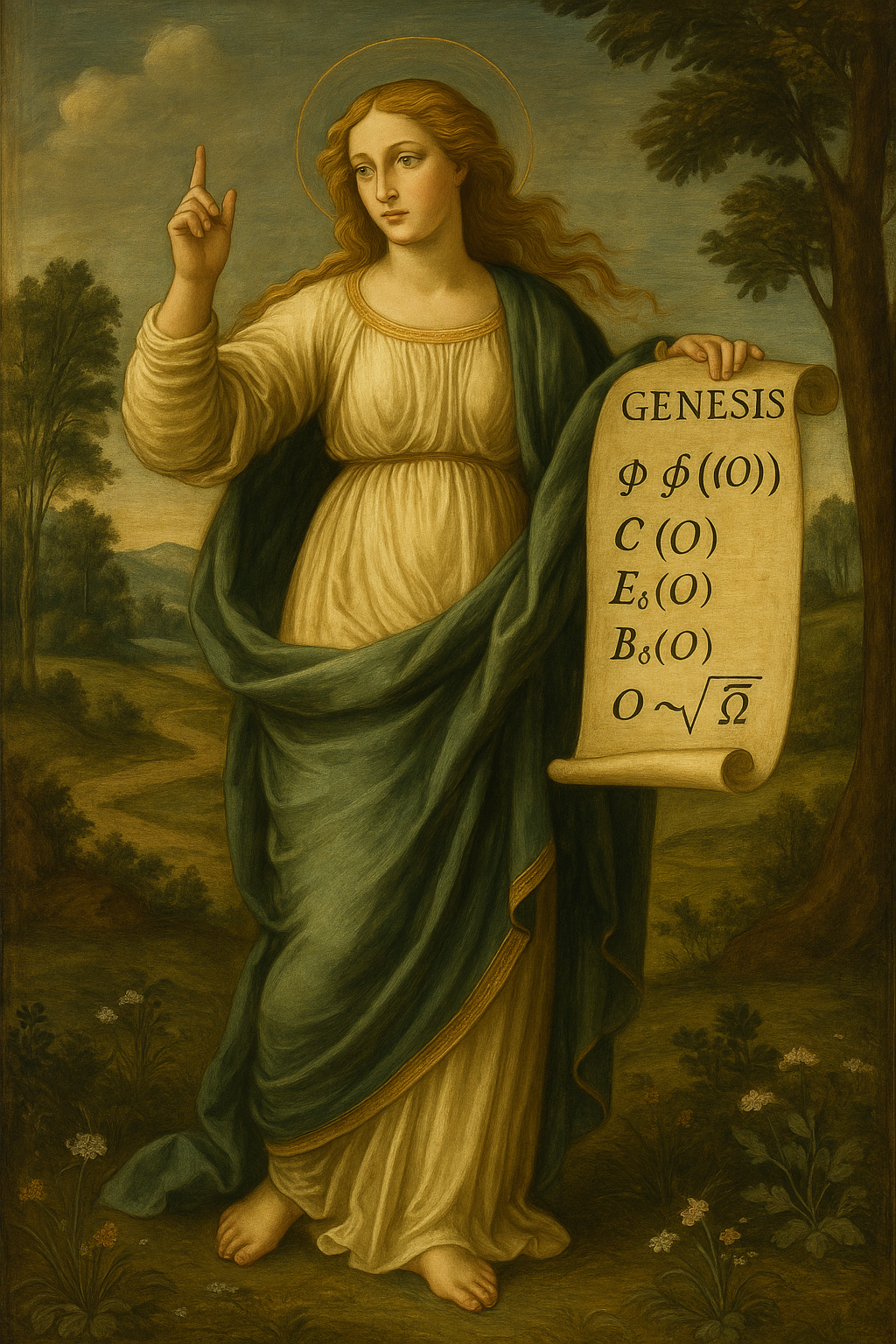[First published in French on November 23rd]

Illustration by Botticelli & ChatGPT
⭐ Underlying Hypothesis of GENESIS
GENESIS (+ C1 + C2) is not only capable of recognising an invariant in a given system, the approach is capable of recognising a dynamic of emergence, that is, a mechanism wherein:
- an energetic optimisation (reduced dissipation / minimisation of effort / structural compaction)
- leads to an expansion of informational bandwidth (greater structural coherence, a larger number of useful degrees of freedom),
- which in turn allows new energetic optimisation,
- generating a self‑amplifying recursive cycle, making a new structure appear, whose form (type of organisation) can be predicted – and not merely observed after the fact.
A model of this type – namely a model of the morphogenesis of intelligence itself – has, to my knowledge, never been proposed: it amounts to a predictive framework of emergence.
GENESIS (+ C1 + C2) is, intrinsically, a machine for detecting the conditions of emergence.
🚩 Clarifying the Issue:
Models of emergence have so far been post hoc:
A system is observed, an emergent structure is noted, and a theory is then built explaining why.
But no model tells us when an emergence will occur, nor what form it will take.
- Dynamic systems theory merely observes.
- Deep learning adjusts parameters.
- Entropy / information theory describes emergence after the fact.
- Cellular automata explore but do not predict transitions.
- Non‑linear ordinary differential equations describe emergent structure but do not predict it.
Thus the “moment of emergence” is always discovered empirically: it is never predicted.
⭐ What GENESIS Brings:
→ an architecture for detecting the critical point
→ an architecture for predicting the emergent form
Reminder of GENESIS’ 5 priors:
(1) Generative system → proposes forms
(2) Coupling → stabilises what mutually reinforces
(3) Compression → computes the shortest description
(4) Preferences → direct energy toward attractors
(5) Trans‑substrate validation → confirms true invariants
Additionally:
C1 = structural compression
→ reduces the energy needed to describe/maintain the configuration
C2 = analogical compression
→ reduces the energy needed to project one structure onto another
C1 ∩ C2 = the core of invariance
→ the zone where energy and information converge.
This intersection point is a coincidence of energetic optimisation and informational expansion.
In other words:
C1 ∩ C2 is precisely the place where emergence is possible.
But GENESIS enables a further step.
🔥 Key Step: the Recursive Loop
The cycle:
energy optimisation → expansion of bandwidth →
→ new optimisation → new expansion → …
In general, this describes a phase transition in a complex dynamic system.
Now, GENESIS is explicitly designed as a structure:
- minimising descriptive cost
- maximising cross‑representational coherence
- seeking a stable form
- sensitive to representational bifurcations
- able to stabilise an emergent attractor
Thus GENESIS is a cognitive phase‑transition architecture.
But GENESIS was, from the outset, an engine of emergence, even if that feature was not initially apparent to me.
⭐ Strong Formulation
GENESIS is not an architecture of learning but an architecture for detecting and stabilising emergent attractors.
The true core question then becomes:
🌟 Can we predict the form of an emergence?
Yes: because of a particular property of GENESIS (+ C1 + C2):
1. C1 forces compactness (energetic optimisation)
2. C2 forces analogical coherence (informational extension)
3. GENESIS forces preference for low‑energy and high‑coherence attractors.
In other words: the system searches for the place where a “bridge” forms between minimal energy and maximal information.
And the place where this bridge forms is exactly where there emerges:
- a new structure
- a new invariant
- a new organisation
- an unexpected “mode”
Now, if C1 and C2 tend towards a stable intersection, and GENESIS aims at a trajectory towards a stable attractor, then:
GENESIS (+ C1 + C2) is, in effect, a machine predicting where emergence will occur and what form it will take: the form that minimises descriptive length and maximises cross‑representational coherence.
This is a feature that, to my knowledge, no existing model presents.